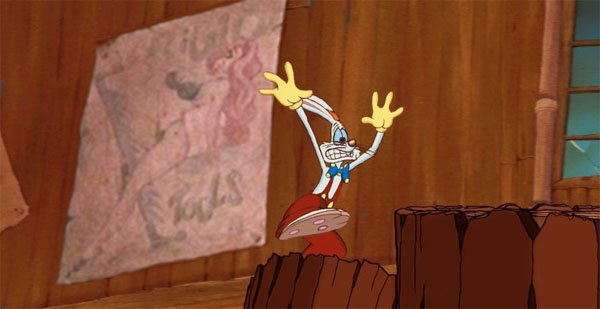
That Other Roger Rabbit Cartoon Controversy. Entertainment Weekly for April 15, 1996 talked about the recall of the laserdisc The Best of Roger Rabbit. Five minutes and thirty-seven seconds into the short Trail Mix-Up (1993), there is a poster on the wall as Roger runs through a sawmill. The poster is of a buxom, bikini-clad woman straddling an oversize saw and the words: “Rigid Tools”.
The poster is impossible to see when the cartoon runs at normal speed but on a laser disc the brief image is legible if frozen at the right moment. Disney released the rumor that the disc was being recalled for “inadequate gluing”. Image Entertainment (that released the disc) president Martin Greenwald said that if Disney wanted to alter the cartoon “that’s their business”. When recalled discs returned to Image they took a hammer to them to render them unusuable.
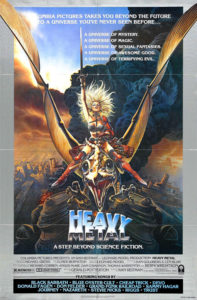 Heavy Metal. As pointed out in The New York Times May 17, 1996, the delay in releasing the animated feature Heavy Metal (1981) to home video involved expensive music clearances. “It’s the most bootlegged movie in the world. Every booth at every science fiction or comic book convention has its own version. It’s something of an honor, I suppose,” said Ivan Reitman, a co-producer.
Heavy Metal. As pointed out in The New York Times May 17, 1996, the delay in releasing the animated feature Heavy Metal (1981) to home video involved expensive music clearances. “It’s the most bootlegged movie in the world. Every booth at every science fiction or comic book convention has its own version. It’s something of an honor, I suppose,” said Ivan Reitman, a co-producer.
Rights to record the soundtrack were settled when the film was made and an album from Elektra was available since the film’s release as well as musical permission to show the movie in theaters and on television but home video was another matter.
“I had always been told we had the necessary clearances for video as well but it didn’t turn out that way,” said Reitman. “We were right on the cusp in 1985 when record companies started withholding rights because they wanted to be in the video business themselves. They wanted a ludicrous amount of money. The standoff ended late last year. The price never came down. What brought it into line was the general growth of video sales that justified the cost.”
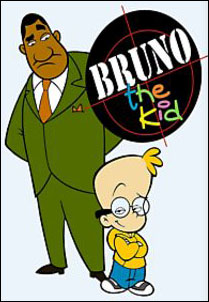 Bruno the Kid. Bruno the Kid was a 1996 half hour syndicated animated series created by actor Bruce Willis (whose nickname was Bruno) and Film Roman. Willis provided the voice for the ten year old computer whiz and appeared in live action on screen as Bruno’s adult secret agent alter ego, a simulated computer avatar. David Willis, Bruce’s brother, was brought in as the project’s producer.
Bruno the Kid. Bruno the Kid was a 1996 half hour syndicated animated series created by actor Bruce Willis (whose nickname was Bruno) and Film Roman. Willis provided the voice for the ten year old computer whiz and appeared in live action on screen as Bruno’s adult secret agent alter ego, a simulated computer avatar. David Willis, Bruce’s brother, was brought in as the project’s producer.
To help promote the series, Film Roman struck deals with the fast food chain, Wendy’s, and the electronic stories, Best Buy. It also worked with the Tahitian tourism department in conjunction with Best Buy on a sweepstakes with the grand prize of a trip to Tahiti. The contest, held in November 1996 required contestants to watch a specific episode of Bruno the Kid and answer a series of questions about Tahiti. That promotion was supported by three million dollars in media advertising in addition to weekly newspaper inserts.
The Wendy’s restaurant chain offered five Bruno premiums to customers through the promotion period and aired a series of television ads themed to the show.
Who’s That Voice? Credits on classic animated shorts are difficult to locate and verify and even more so in terms of vocal performances. Animator Mark Kausler was able to determine that the voice of the crow “Romeo” in Rudolph Ising’s Romeo in Rhythm (1940) was done by Ernie “Bubble” Whitman (1893-1954) who also did the voice of the black preacher in Swing Social (1940).
Whitman also appeared in the “Beulah” radios series and hosted the “Jubilee” radio show (starting in 1942) directed at black G.I.s and featuring high quality jazz. Whitman, along with Nicodemus Stewart (the voice of Br’er Bear) appear together in the movie Cabin in the Sky (1943). Whitman’s vocal contributions to animation seem to be larely forgotten.
 Joe Hale. In the Daily News, February 3, 1985, producer Joe Hale said, “My fantasy has always been to do a picture that’s as good as anything Walt (Disney) ever did. We’re doing things in this (The Black Caudron, 1985) that go beyond what can be done in live action.”
Joe Hale. In the Daily News, February 3, 1985, producer Joe Hale said, “My fantasy has always been to do a picture that’s as good as anything Walt (Disney) ever did. We’re doing things in this (The Black Caudron, 1985) that go beyond what can be done in live action.”
Animation Never Made: Dreamworks’ Ash. From Variety June 20,1996, Dreamworks announced it acquired the film rights to a new comic book superhero called “Ash” for a high six figure sum. The animated film which Dreamworks hoped would be a franchise would be based on the Event Comics story and characters by Joe Quesada and Jimmy Palmiotti and adapted by screenwriter Rand Ravich.
Ash is the story of a firefighter who was miraculously saved from a blazing inferno by a “force from the future” and as a result has extraordinary powers. Dreamworks was talking with a Japanese director because they wanted an anime style.
“We see it as a tremendous action-adventure animated franchise,” said Dreamworks Jason Hoffs who was developing the property with producer Andrew Lazar who first found the material. “The project could also easily fuel a line of action figures for Dreamworks Toys”.
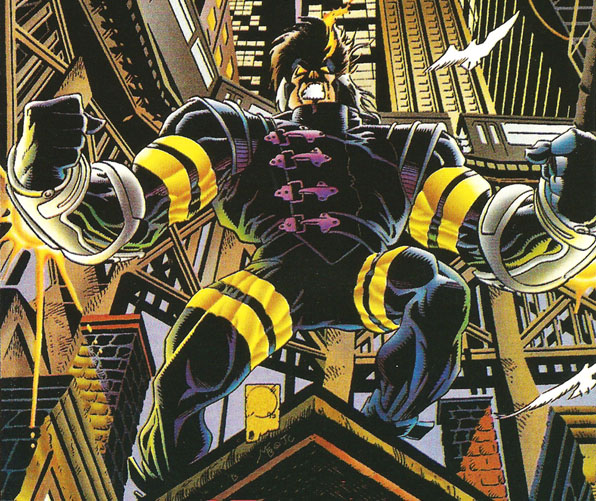
“ASH”
The Animation Trivia Champion. When Jerry Beck started at United Artists in 1978, he worked in the computer room and built up a reputation for his cartoon knowledge. His co-workers decided to challenge him one day by bringing in another programmer from upstairs who had a similar reputation.
It turned out to be Bob White, the cartoonist of Archie comics Cosmo the Merry Martian (a special favorite of Jerry’s), Archie’s Mad House and more. Jerry learned that White had been sort of blacklisted by Archie comics when they found out he had been moonlighting on the Tippy Teen comics for Tower Comics that eventually folded. White went into advertising for a while and then gave up cartooning entirely and went into computer programming. A few months after this battle of the titans, White moved to Texas to work for another computer firm but not before giving his competitor a bunch of original art he had drawn for Archie Comics.
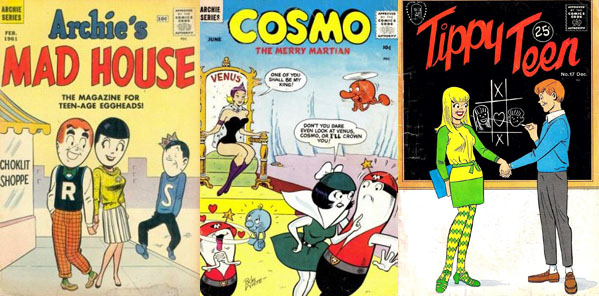
John Pomeroy and The Land Before Time. Lucasfilm Fan Club Magazine #6 (Winter 1989) featured an interview with animator and producer John Pomeroy about The Land Before Time (1988): “I was involved in nearly everything, all the story meetings, and recording sessions. I established much of the key animation of the characters, how they moved, what their personality would be like, how they would talk.
“It was a big challenge to get delicate expressions with just a bare head and neck and body. We didn’t have the luxury of shoulders or hands or clothing to express gestures. When we made the film, we knew there would be three ways to tell the story: through the dialogue, through the music and with color.”


 Jim Korkis is an internationally respected animation historian who in recent years has devoted his attention to the many worlds of Disney. He was a columnist for a variety of animation magazines. With his former writing partner, John Cawley, he authored several animation related books including The Encyclopedia of Cartoon Superstars, How to Create Animation, Cartoon Confidential and Get Animated’s Animation Art Buyer’s Guide. He taught animation classes at the Disney Institute in Florida as well as instructing classes on acting and animation history for Disney Feature Animation: Florida.
Jim Korkis is an internationally respected animation historian who in recent years has devoted his attention to the many worlds of Disney. He was a columnist for a variety of animation magazines. With his former writing partner, John Cawley, he authored several animation related books including The Encyclopedia of Cartoon Superstars, How to Create Animation, Cartoon Confidential and Get Animated’s Animation Art Buyer’s Guide. He taught animation classes at the Disney Institute in Florida as well as instructing classes on acting and animation history for Disney Feature Animation: Florida.




















































No wonder Laserdiscs didn’t last long: too many Roger Rabbit controversies
Oh, they have lasted very long.
I wonder what Jerry thinks of the company’s new Cosmo comics…
Nobody out-nerds our Jerry!
Sweet story!
I wonder if Disney recalled those laserdiscs to keep with their clean family image or if they got a C&D letter from the real life Ridgid Tools, which really did issue posters of pin-up girls using their equipment? You can bring some of those up in Google image search if you dare.
I suppose we’ll never know. I do think I still have the LaserDisc in my collection anyway!
I wonder how many copies of that laserdisk made it out to the public before the recall. I remember hearing about this while I was in the office one day, and I was so miffed that I hadn’t bought my copy of this disk before the recall. If someone saw this frozen image, that means that someone already bought the disk, so others might have this as well…Yes, I recognized the similarities to Romeo in the Rudy Ising cartoon and the preacher in the Hanna-Barbera cartoon. Thanks to laserdisk, both cartoons were made available on two now valuable and stunning laser sets–THE HAPPY HARMONIES COLLECTION and THE ART OF TOM AND JERRY, VOL. 2 (which featured all the remaining TOM AND JERRY cartoons up through the cinemascope era, along with selections of other MGM cartoons produced by Bill and Joe. What that set left out were one or two other cartoons from the CAPTAIN AND THE KIDS series, like “BLUE MONDAY” and “THE WINNING TICKET”, both of which were apparently produced by Hanna-Barbera. I guess that they didn’t think at the time that anyone would care at all about the CAPTAIN AND THE KIDS entries, aside from one example, since Bill and Joe didn’t have any happy memories working on the series.